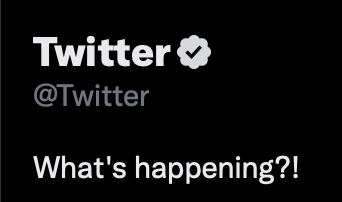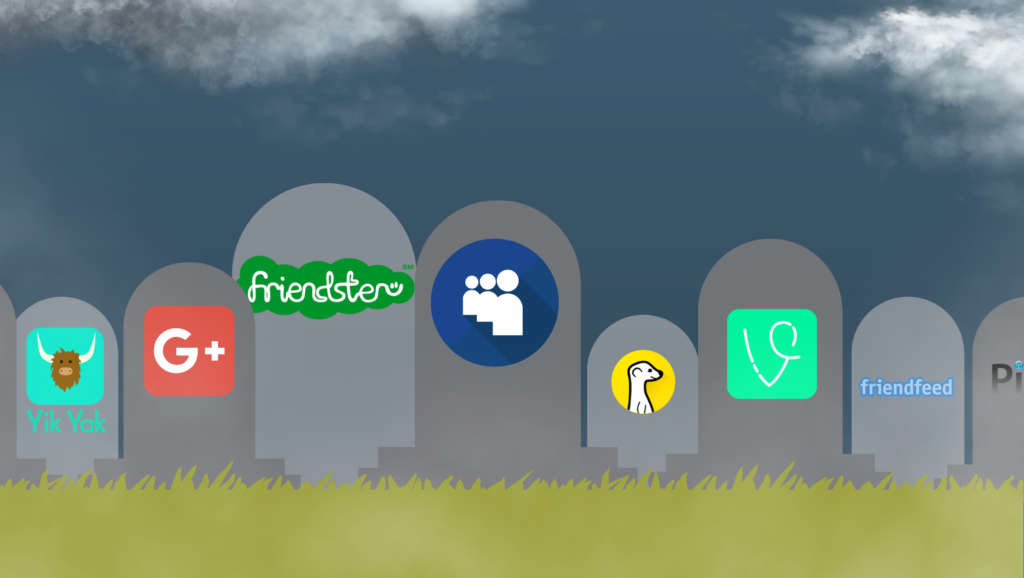
Author: Caitlin Kryl, Content Marketing Manager
What’s happening?!
An appropriate reaction if you:
- are a Twitter user who’s been following the news of the social media giant’s unfortunate spiral into chaos; or
- unsuccessfully attempted to navigate Ticketmaster in a mad dash for a seat at Taylor Swift’s “Eras” tour.
Something tells me I’m not the only one who’s in both of these camps.

Twitter is the great and nearly unchallenged watering hole in the technology savannah. For years, all of the primary actors who make or break business success—journalists, investors, industry influencers, and politicians—have gathered on Twitter to exchange ideas.
Now, following a tumultuous acquisition and transition of power to new owner Elon Musk, Twitter is in freefall: Last week, mass layoffs. This week, an ‘extremely hardcore‘ ultimatum to the remaining staff. MIT reports that Twitter lost more than 875,000 users and counting in the week after Musk’s deal closed (more than double the usual number in that same time period). Twitter is also suffering a massive drop in revenue as major global brands pause ad spend or leave the platform altogether amidst growing concerns and pressure from activist groups and customers.
Will our gold standard channel for internet chatter go the way of MySpace?

We can’t yet predict what’s in store. This de-evolution will surely continue to… well… devolve… over the coming weeks and months. As essential Twitter team members dwindle, economic challenges ripple across big tech, and more social media users dip their toes into alternative channels like Mastodon, there are several steps we’re advising our clients to take—steps you should take too—to prepare for what’s next.
3 ways to stay agile in the shifting social media landscape:
1. Ensure you’re cyber secure.
While some of Twitter’s risk factors, like the newfound ambiguity behind who can don a blue checkmark, have been curbed, for now, it’s still a crucial moment to check in on your account security.
Even before Musk purchased Twitter, the company’s former head of security and internal whistleblower Peiter Zatko warned that the platform “Was over a decade behind industry security standards.” Now that Twitter has lost more than 50 percent of its workforce (a significant chunk of those roles on engineering, security, and ethics teams), many are worried about what this additional blow may mean for the integrity of our personal data.
Instead of waiting to find out what the risks are, we’ve advised our clients to ensure they’re using highly secure passwords and have set up 2-factor authentication if possible. Here’s how you can do the same.
Another strong choice if you’ve been tweeting for years? Download an archive of your data.
2. Lean into proven channels — while remaining open to new frontiers.
We’re not advising that you leave the bird app just yet, but if the channel was previously a primary business driver for you, it’s time to pour more of that effort into alternate channels for potentially greater returns.
Proven channels:
Linkedin: We’re big fans of Linkedin here at s2s (Linkedin, dare I say it, seems to have avoided the negative press spotlight for now). The platform boasts unprecedented reach potential by today’s standards, especially when brands and business leaders coordinate efforts. Here’s my take on how to leverage Linkedin for greater impact and visibility among potential investors, partners, and customers with real-world examples from s2s clients.
Niche-specific channels: Where are the primary movers in your specific industry? Your team might already engage with them on Reddit or GitHub if you’re in the tech community, or on ResearchGate if you’re in academia. Now might be time to strategize how to show up on those more niche channels consistently.
New frontiers:
Mastodon: Mastodon, a clear Twitter alternative, is growing at breakneck speed. Hundreds of journalists are flocking to Mastodon via servers like Newsie.social and Journa.host — which makes us cautiously optimistic that Mastodon may fill the Twitter-shaped hole in the social media landscape. The platform has the potential to become the next hub for earned media opportunities. But there are several key considerations for brands before setting up a Mastodon account (more on that below).
TikTok: It’s no dance app. The fastest-growing social media platform is also the tool a growing number of young Americans use as a search engine and news outlet. Thousands of news sites already produce daily content for TikTok and a growing number of their journalists have joined as well. One note: Brands and leaders who want to join the TikTok world must be prepared to adapt to the highly-visual, less formal, and rapidly-produced style of communication necessary to break through the noise and land on the coveted “For You Page.”
3. Ultimately: Show up on the platform where your audience lives and engages.
Does all this Twitter turbulence and the mass migration to Mastodon mean everyone should flock there? Not exactly.
First, it’s a big undertaking to start, and grow, a new channel from scratch, while learning the ins and outs of a new-to-us communication model. Second, media experts are still noncommittal about what Mastodon is and will become. A key challenge is that the platform’s decentralized architecture means that audiences are segmented across a handful of servers, and advertising is not allowed, posing a challenge for brands. (More quick insights into how brands can navigate Mastodon from PR Week.)
While we don’t have a crystal ball, it’s a smart move to take some time over the next several weeks to identify the one to two channels where you currently see the most engagement from your key audiences, or where you see your key audiences engaging but don’t have an established presence yet.
All told, social media is still a very young industry. To put things into perspective, none of the leading social media platforms are older than 20 (just a bit younger than Google and five years older than the iPhone). The technologies that are now central to business and information sharing didn’t even exist before the early aughts, and social media marketing didn’t become a critical business tactic on these platforms until even more recently.
While we continue to grapple with the tumult across the big tech industry, we must maintain perspective. With careful planning, observation, and most importantly, flexibility, we can grow as digital communicators as the internet grows up.
A note: We’ll likely update this post with new recommendations and insights as the Twitter saga progresses.
In the meantime, here are 3 journalists we recommend you follow to keep track of trends: